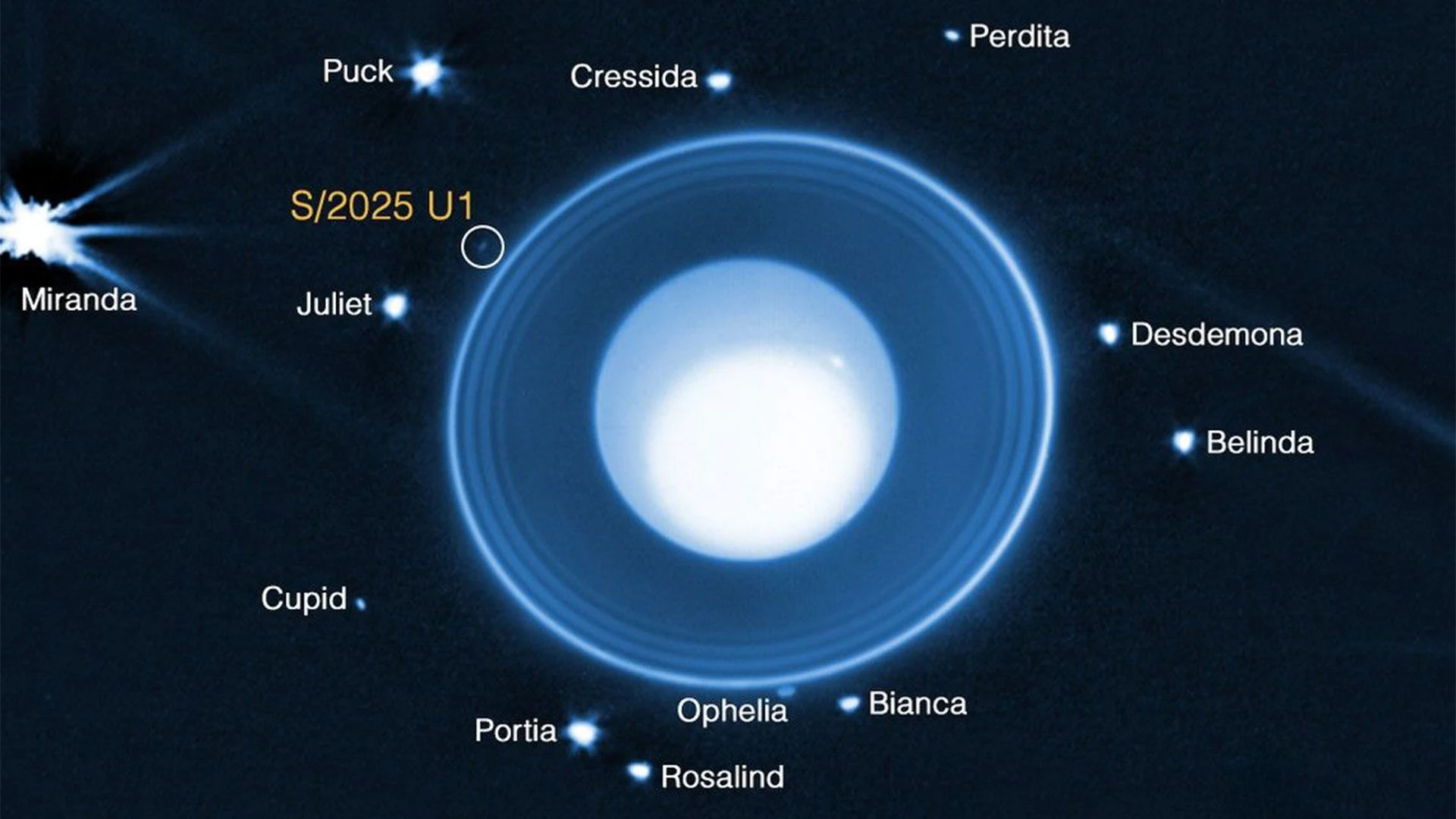
"The moon was discovered by a research team using NASA's James Webb Space Telescope, the successor to the Hubble Space Telescope. Like the Hubble Telescope, the Webb Telescope was designed to snap images of deep space, helping scientists pursue some of the universe's enduring mysteries. The new moon was discovered in a set of 40-minute-long exposure images taken by the Webb Telescope's near-infrared camera, which allows it to image fainter and more distant objects than the Hubble."
""It's a small moon but a significant discovery, which is something that even NASA's Voyager 2 spacecraft didn't see during its flyby nearly 40 years ago," Maryame El Moutamid, a lead scientist at Colorado's Southwest Research Institute, said of the discovery. The newly found moon is estimated to be 6 miles in diameter-a diminutive size that likely helped it elude the Hubble."
A previously unknown moon orbits Uranus, discovered using NASA's James Webb Space Telescope. The moon was detected in 40-minute near-infrared exposures that reveal fainter, more distant objects than Hubble can image. The satellite measures roughly 6 miles in diameter, a size that likely enabled it to elude earlier observations by Hubble and Voyager 2. The moon orbits within the paths of Uranus's larger moons such as Miranda, Ariel, Umbriel, Titania, and Oberon. The discovery raises Uranus's known moon count to 29 and suggests a complex, chaotic history among inner moons and rings.
Read at Fast Company
Unable to calculate read time
Collection
[
|
...
]